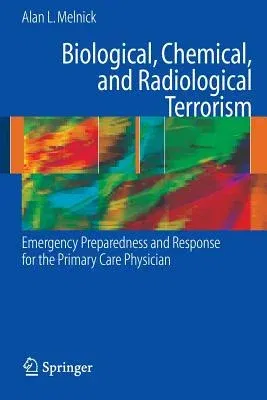Alan Melnick
(Author)Biological, Chemical, and Radiological Terrorism: Emergency Preparedness and Response for the Primary Care Physician (2008)Paperback - 2008, 12 December 2007

Qty
1
Turbo
Ships in 2 - 3 days
In Stock
Free Delivery
Cash on Delivery
15 Days
Free Returns
Secure Checkout

Print Length
248 pages
Language
English
Publisher
Springer
Date Published
12 Dec 2007
ISBN-10
0387472312
ISBN-13
9780387472317
Description
Product Details
Author:
Book Edition:
2008
Book Format:
Paperback
Country of Origin:
US
Date Published:
12 December 2007
Dimensions:
23.55 x
16.23 x
1.52 cm
ISBN-10:
0387472312
ISBN-13:
9780387472317
Language:
English
Location:
New York, NY
Pages:
248
Publisher:
Weight:
408.23 gm